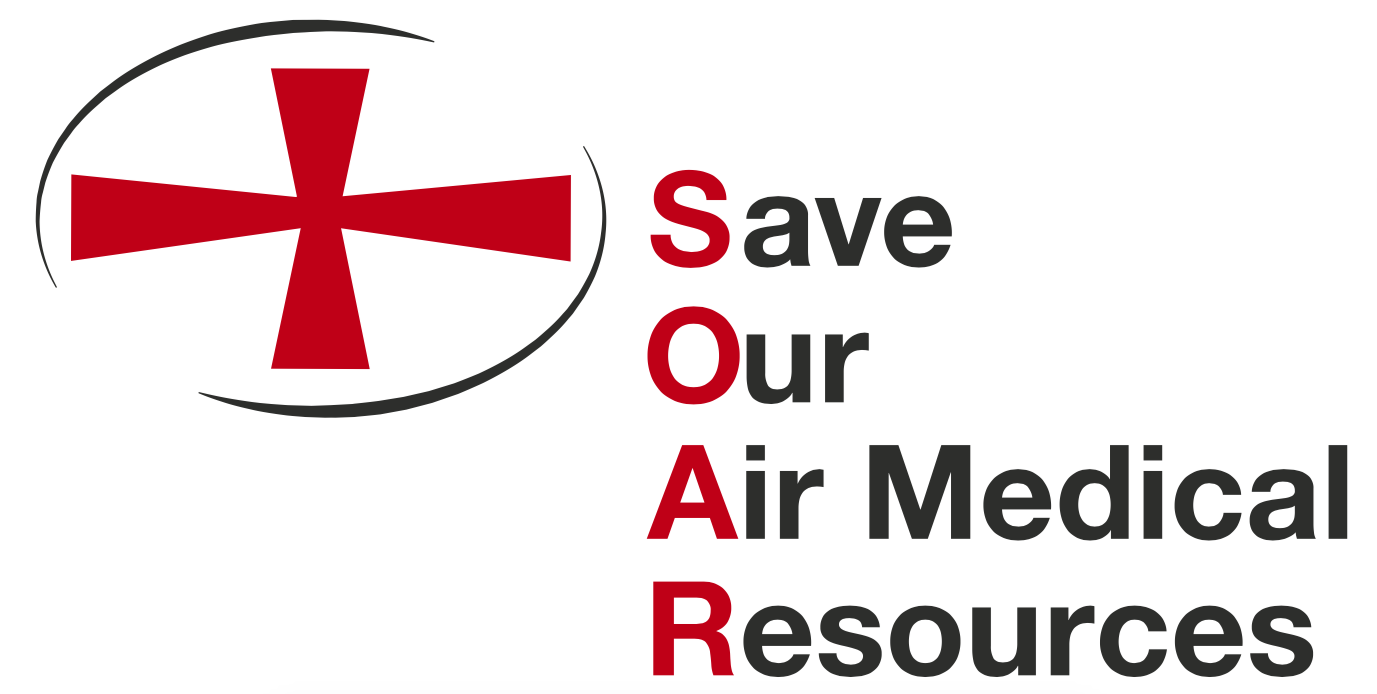The following statement was released today by Carter Johnson, spokesperson for the Save Our Air Medical Resources (SOAR) Campaign, in response to Chairman Lamar Alexander’s remarks pertaining to air medical during today’s legislative hearing on S. 1895 in the Senate Health, Education, Labor & Pensions Committee.
“This proposal is dangerous, unworkable, and puts patient lives at risk. 85 million Americans live in rural areas where it takes more than an hour to get to a Level I or Level II trauma center by ground. Air medical transport is the lifeline that delivers patients to the health care facility they need in emergency situations. This bill, which puts insurance companies ahead of patients and by letting insurance companies decide what they want to pay for this service, will decimate essential air medical services and leave patients without access to the care they need in an emergency.
“The concept behind benchmarking is simply unworkable when applied to air medical transportation because in most places, there is no meaningful median network rate. Some insurance providers have refused to allow any emergency air medical providers to go in-network, and others have only one in-network emergency air medical provider. Further, it is completely inaccurate to say that 70% of air medical transports are out of network — in fact, 70% of air medical patients are either uninsured or covered by Medicare, Medicaid or other Government insurance. Only 30% of air medical patients have private insurance coverage, and if one applies the GAO’s questionable estimate that 69% of this smaller group is transported by providers that are out-of-network, this represents about 1 in 5 air medical transports overall.
“These and other facts should raise concerns among policymakers about the notion of benchmarking. If 69% of the small group of patients who have private insurance are transported by air medical providers that are outside of their insurance network, isn’t it obvious that the data necessary for benchmarking are missing? How could appropriate rates be set without factoring hard data on rural vs. suburban transports, provider type (hospital system v. community v. standalone provider), type of transport, patient outcome, and patient claim experience, to name a few crucial considerations? This is policymaking in the dark with a blindfold.
“If this proposal becomes law and insurance companies are allowed to reimburse air medical providers at either an illusory median network rate or the minimum allowable rate, insurance companies will default to the minimum allowable rate, which is not based on negotiated market data or actual market conditions. The result will be that insurance companies will increase their profits, air bases will close, and millions of Americans will lose access to the care they need when they need it most.
“There is a better way. The government should get the data it needs before approving this dangerous and impractical proposal. Last year, Congress directed the U.S. Department of Transportation to collect data from the air medical industry and develop recommendations for protecting patients from balance billing, improving disclosure and informing consumers of insurance options. We support this process and want it to work so that patients are taken out of the middle and get the care they need.”
ADDITIONAL KEY FACTS ABOUT AIR MEDICAL
90% of all emergency air transports are for cardiac, stroke, or other trauma conditions. The remaining 10% encompass specialty pediatric care, burns, neonatal, high-risk obstetrics, neurological, and other conditions.
100% of emergency air transports are ordered by an EMT or attending physician based on medical necessity.
100% of emergency patients are transported without regard to insurance status or ability to pay.
20% of Americans, or 85 million, live in areas where it takes more than one hour to get to Level I or II trauma center.
More than 70% of patients transported are covered by Medicare, Medicaid, other government insurance, or have no insurance at all. The Government Accountability Office estimates that about 20% of all air medical transports, or 1 in 5, are of patients who have insurance but are transported by an out-of-network air medical provider.
Medicare drastically under-reimburses for the cost of an emergency air medical transport, covering only 59% of the cost (in 2015 dollars). The average Medicaid reimbursement is even worse, covering only 34% of the cost.

